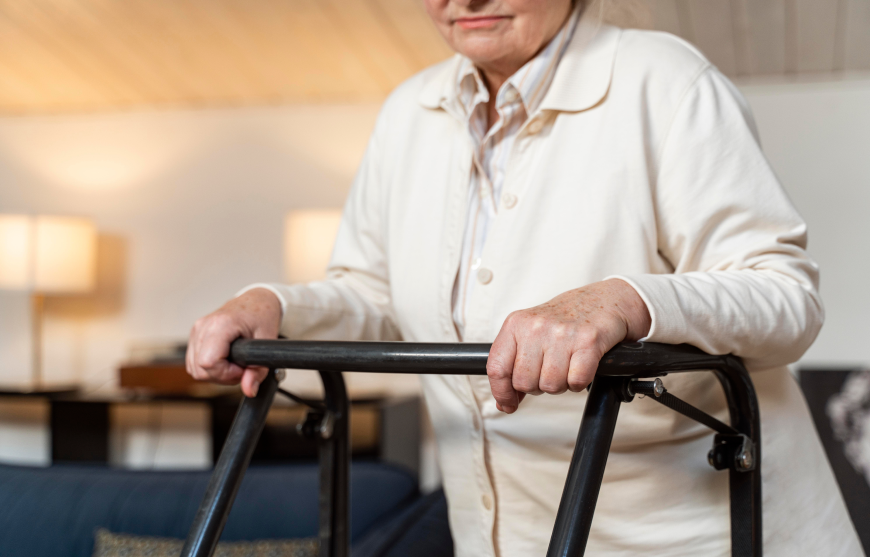
Understanding Live-In Care Services
Live-In Care Services provide personalized support for individuals who need assistance with daily living activities while staying in the comfort of their own home. Unlike traditional home care, which may involve several short visits a day, live-in care ensures a caregiver is present 24/7, offering consistent support and companionship. This service is ideal for seniors, individuals recovering from illness or surgery, or those with chronic conditions who require continuous attention. Live-in caregivers not only assist with physical needs but also provide emotional support, helping to reduce feelings of loneliness and isolation. Families benefit from knowing their loved one is safe and well-cared for at all times. These services can be tailored to match the specific requirements of the individual, ensuring both comfort and independence. By integrating professional care into the home, individuals can maintain their daily routines while receiving the help they need.
Benefits of Live-In Care Services
Live-In Care Services offer numerous advantages for both the care recipient and their family. Personalized care ensures that every need, from medical to daily living support, is addressed promptly. Consistent companionship promotes mental and emotional well-being, helping individuals feel valued and less isolated. Caregivers can assist with daily tasks such as bathing, dressing, meal preparation, and medication management. Having a professional present at all times provides peace of mind for families who may worry about safety, especially for those with mobility challenges or health conditions. Live-in care also relieves family members from the pressures of round-the-clock caregiving, allowing them to focus on quality time rather than constant supervision. This approach enhances the overall quality of life, allowing individuals to remain in familiar surroundings rather than transitioning to care facilities.
Services Typically Offered by Live-In Care Providers
Live-in caregivers provide a wide range of services tailored to individual needs. These can include medical and non-medical support, mobility assistance, fall prevention strategies, and medication management. Caregivers can also help with household chores, meal preparation, and maintaining a safe living environment. Social engagement and mental stimulation activities are often included to ensure emotional and cognitive well-being. Some caregivers are trained to provide specialized support for individuals with dementia or chronic illnesses. The goal is to provide comprehensive assistance that addresses both physical and emotional needs, creating a supportive home environment. Families can rest assured that their loved ones are receiving care that goes beyond basic assistance, fostering independence while ensuring safety.
How Live-In Care Improves Quality of Life
Live-in care significantly enhances an individual’s quality of life by allowing them to stay in their own home while receiving professional support. Maintaining independence is a key factor, as caregivers assist without taking over daily routines completely. Continuous supervision ensures safety, particularly for individuals prone to falls or other medical complications. Emotional and mental health benefits are evident, as companionship reduces isolation and fosters meaningful connections. Caregivers also help maintain consistency in daily schedules, which can be especially important for those with cognitive conditions. By offering personalized care, live-in caregivers help individuals enjoy a higher level of comfort and stability. Overall, the presence of a skilled caregiver allows individuals to live with dignity, security, and confidence.
Choosing the Right Live-In Care Service
Selecting the right live-in care service requires careful consideration. Experience, qualifications, and certifications of the caregiver are critical to ensure proper care. Matching the caregiver’s personality with the individual’s preferences can create a harmonious and supportive environment. Trial periods can be beneficial for families to evaluate compatibility and quality of care. Cost considerations should also be assessed, including the possibility of financial planning, insurance coverage, or assistance programs. Open communication between families, care recipients, and caregivers is essential for a successful arrangement. By taking the time to research and select the right service, families can ensure the best possible care for their loved ones.
Challenges and Considerations
While live-in care provides many benefits, there are challenges to address. Adapting to having a caregiver in the home may require adjustments in personal routines and privacy expectations. Some individuals may initially feel uncomfortable sharing their space or may struggle with boundaries. Families must balance professional care with their own involvement, maintaining engagement without overstepping. Managing long-term care needs requires planning for possible changes in health status or care requirements. Effective communication is crucial to prevent misunderstandings and ensure the care arrangement remains positive. Being aware of these challenges allows families to approach live-in care with realistic expectations and strategies for smooth integration.
How Technology Enhances Live-In Care
Technology plays a key role in supporting live-in care services, making caregiving more efficient and safe. Monitoring devices, such as wearable health trackers, help caregivers observe vital signs and detect falls in real time. Telehealth services allow medical professionals to provide consultations without leaving home, saving time and ensuring timely interventions. Communication tools enable family members to stay informed about their loved one’s daily activities and well-being. Apps and digital reminders can assist with medication schedules and appointments, enhancing adherence to care plans. Technology also facilitates engagement, such as virtual activities and social connections, improving mental health and emotional support. By integrating modern tools, live-in care becomes more effective, responsive, and personalized.
Real-Life Scenarios and Practical Tips
A successful live-in care arrangement requires planning and practical strategies. Daily routines can be structured around the individual’s needs, including meals, physical activity, and social interaction. Families should encourage hobbies and interests to maintain engagement and mental stimulation. Clear communication and defined responsibilities between the caregiver and family help prevent confusion or stress. Incorporating feedback from the care recipient ensures that services are adapted to personal preferences. Caregivers should receive support and breaks to maintain their own well-being, which ultimately benefits the recipient. Planning for social outings or community engagement activities can enrich the individual’s lifestyle. A thoughtful approach ensures that live-in care promotes comfort, independence, and overall happiness.
Frequently Asked Questions
Who is eligible for live-in care services?
Live-in care is suitable for seniors, individuals recovering from surgery or illness, and those with chronic conditions requiring ongoing support.
How does live-in care differ from 24/7 home care?
Live-in care involves a caregiver residing in the home full-time, while 24/7 home care may include multiple shifts with different caregivers.
Can live-in caregivers provide medical assistance?
Many live-in caregivers are trained to provide basic medical support, including medication administration and monitoring health conditions.
What are the average costs associated with live-in care?
Costs vary depending on location, level of care, and caregiver qualifications, but financial planning and insurance options can help manage expenses.
How are caregivers screened and trained?
Reputable agencies conduct thorough background checks, training, and certifications to ensure qualified and trustworthy caregivers.
Can families request specific caregivers?
Yes, families can often request caregivers based on compatibility, experience, and personal preferences.
What happens if the caregiver needs time off?
Agencies typically provide backup caregivers or temporary replacements to ensure uninterrupted care.
Takeaway
Live-In Care Services offer a comprehensive solution for individuals seeking independence while receiving professional support at home. They provide not only physical assistance but also emotional companionship, enhancing the overall quality of life. Careful selection of caregivers, effective communication, and integration of technology ensure a safe and comfortable environment. By understanding the services, benefits, and practical strategies involved, families can make informed decisions that support both their loved one’s needs and their own peace of mind. With the right approach, live-in care can create a nurturing, secure, and enriching home experience for those who need it most.


